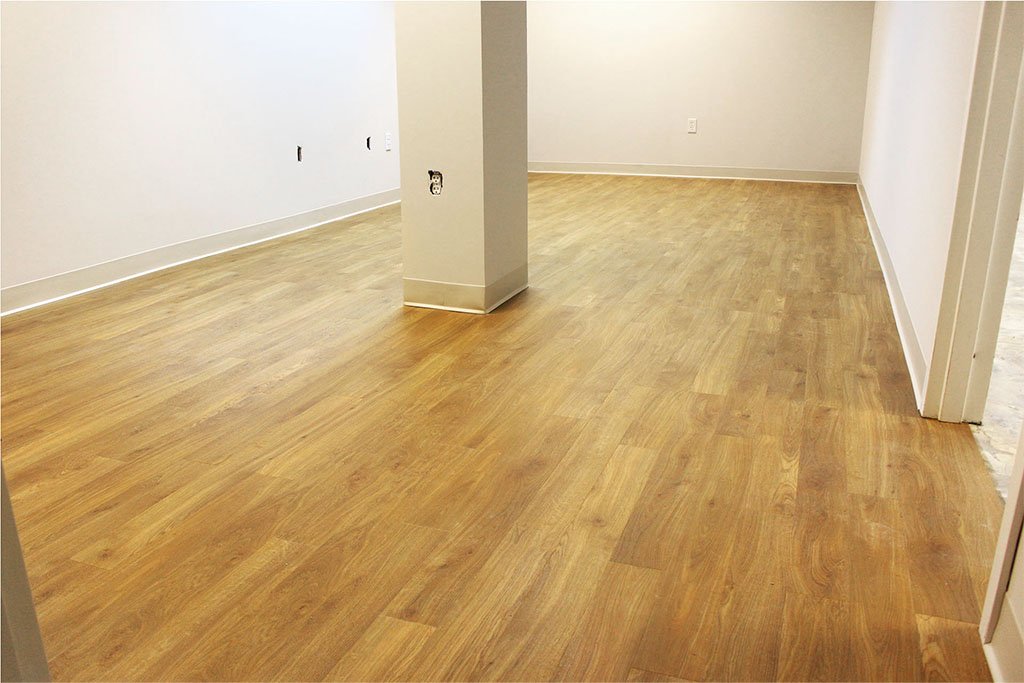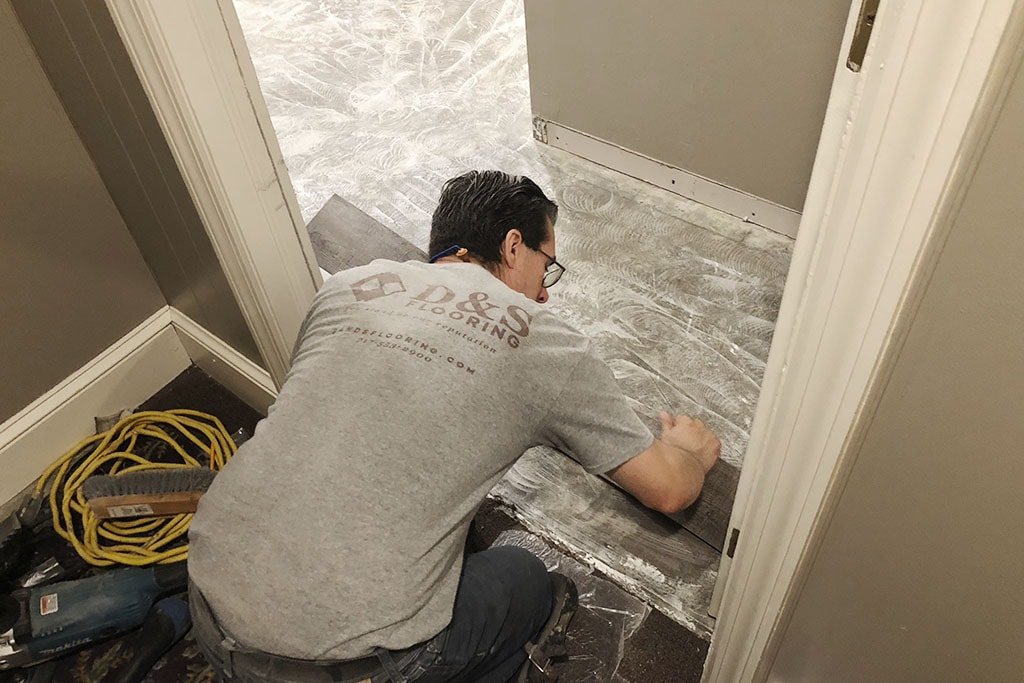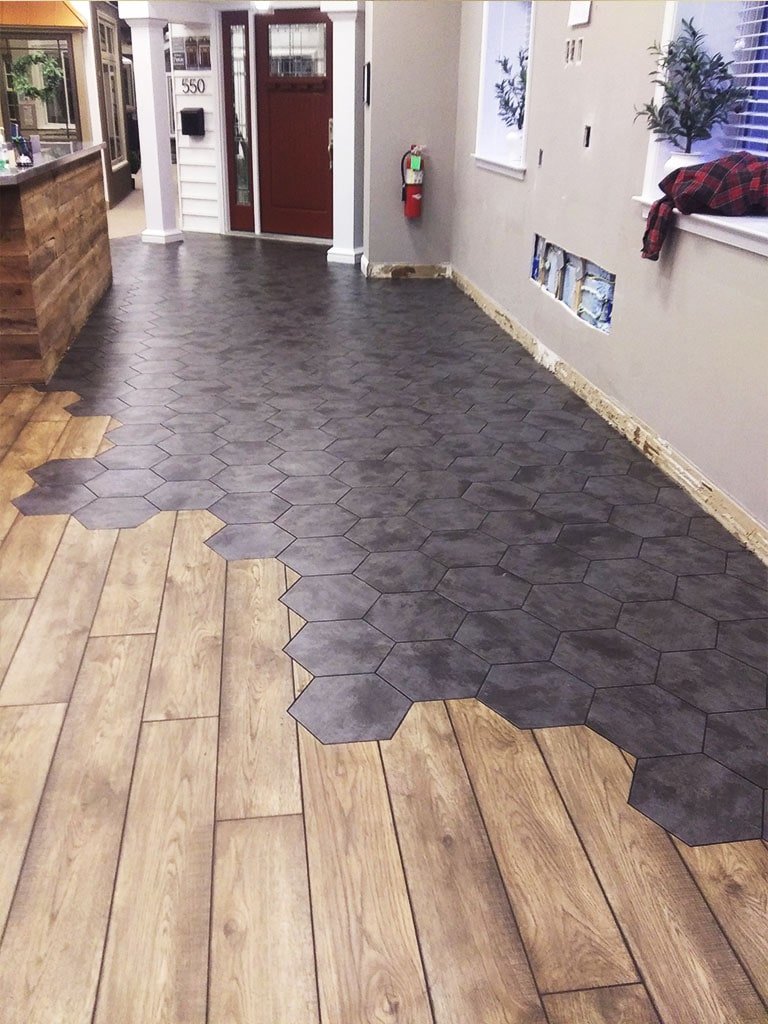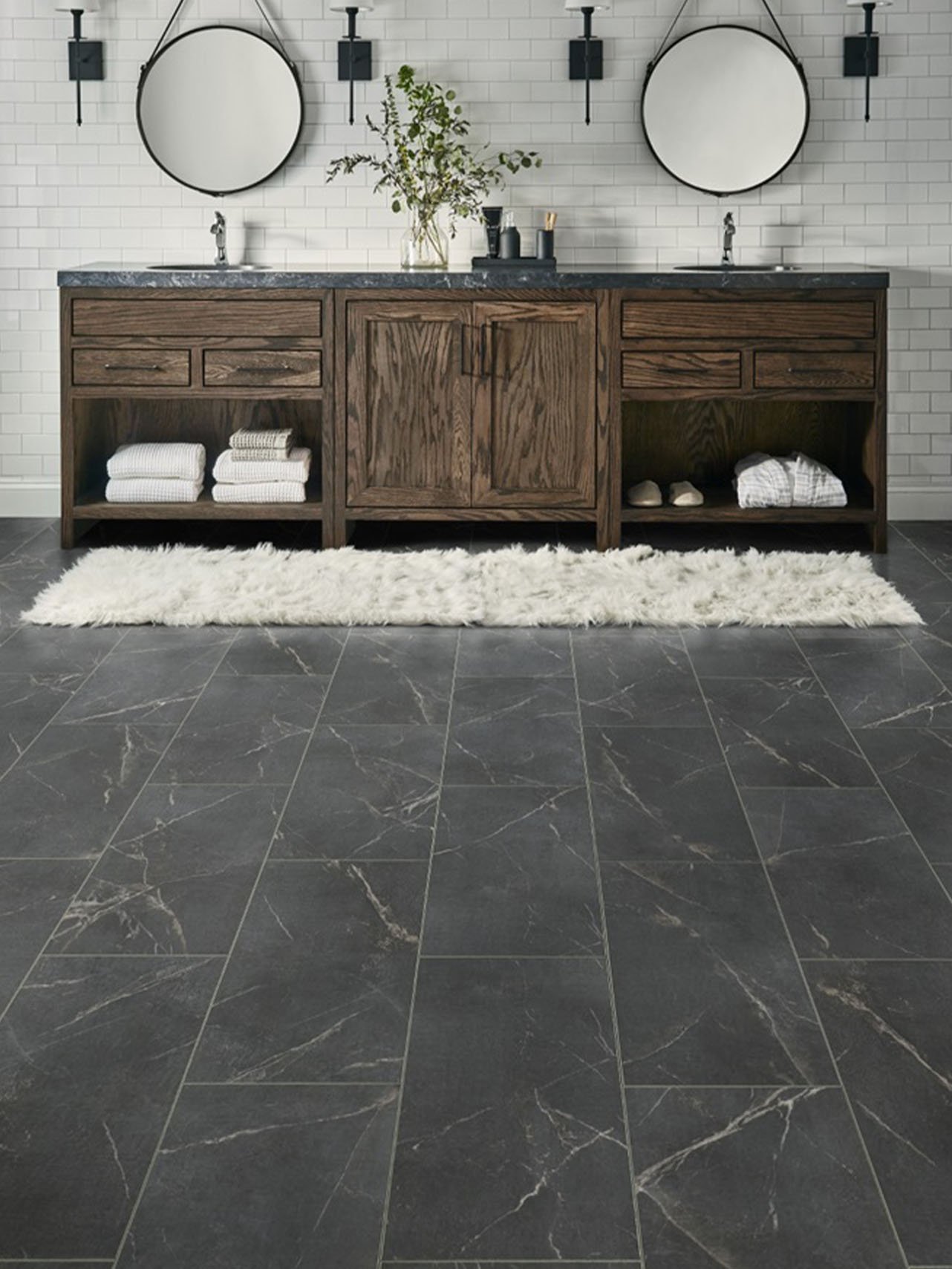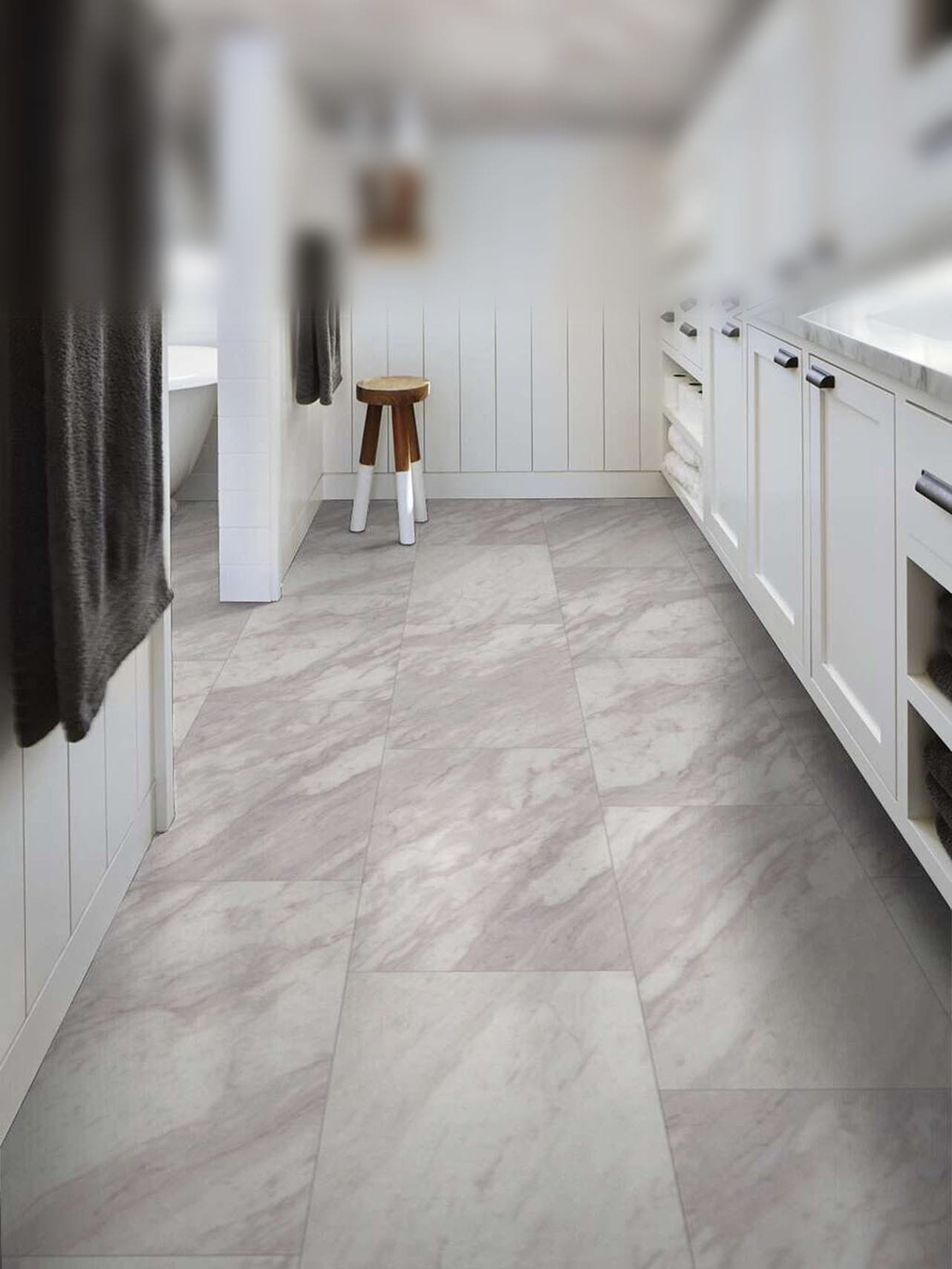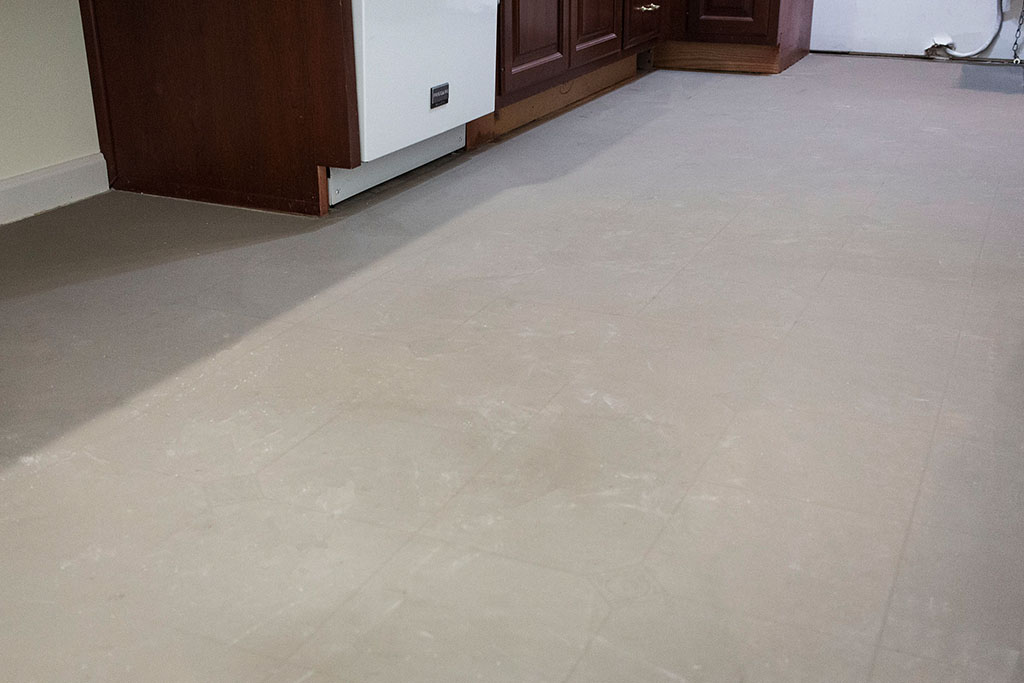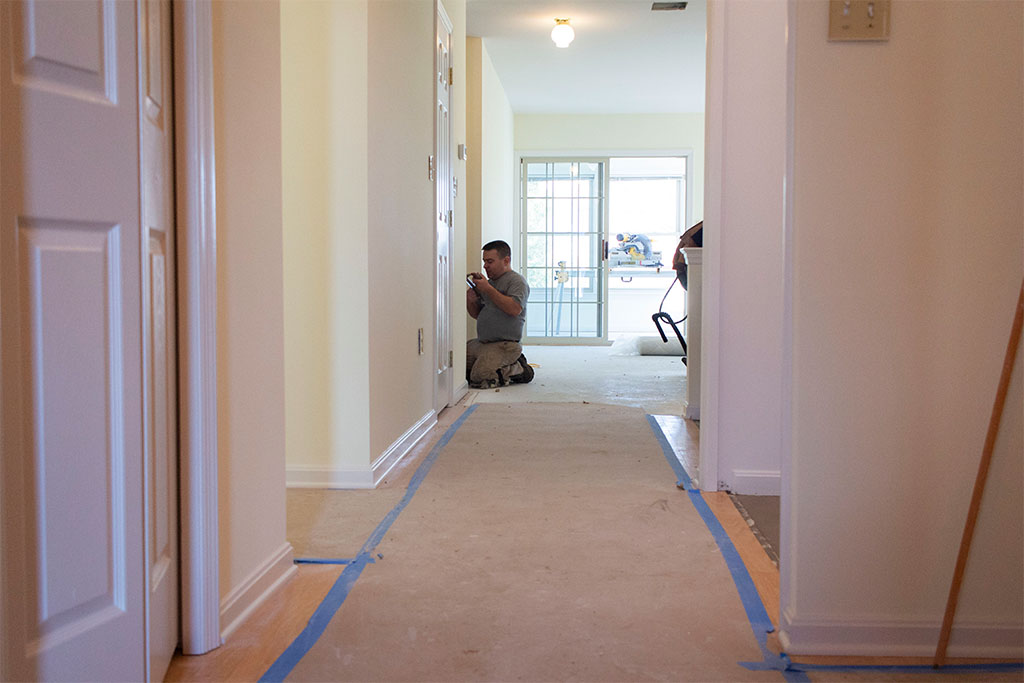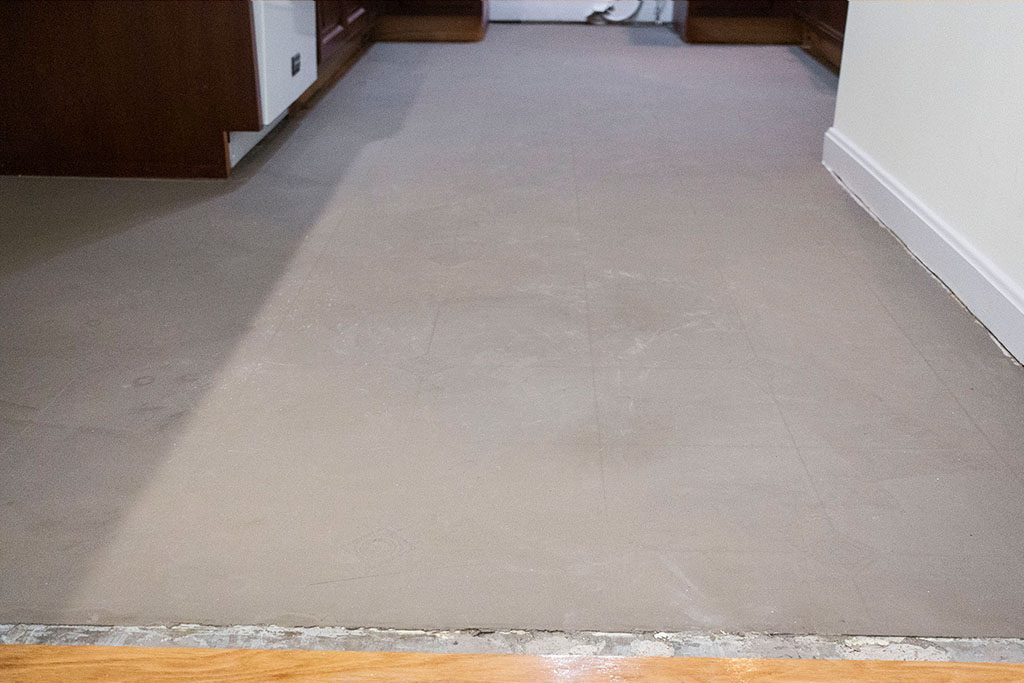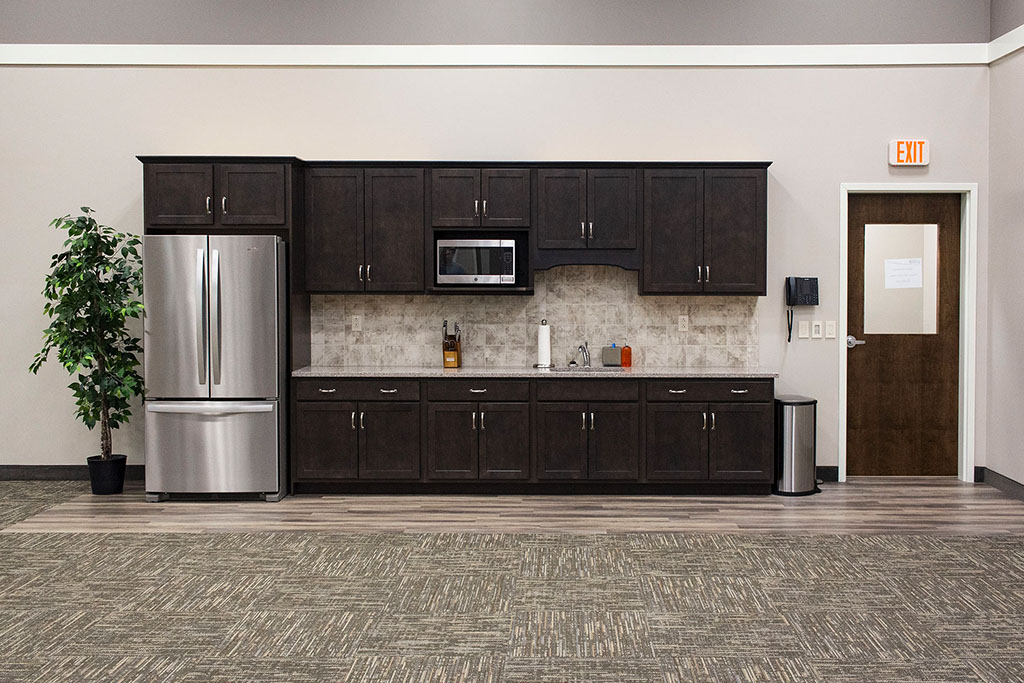All About Resilient Vinyl Flooring
/Resilient Vinyl Flooring
ABOUT RESILIENT VINYL FLOORING
Resilient vinyl flooring is the most popular and fastest-growing hard surface flooring in the United States. At D&S, we often find ourselves installing sheet vinyl, luxury vinyl plank (LVP), luxury vinyl tile (LVT), or rigid core vinyl. Resilient vinyl is affordable, waterproof*, and low maintenance. Plus, thanks to advanced engineering, modern, high-definition printing technology, and embossing techniques, resilient vinyl is durable, practical, appealing, and realistic. At a glance, some vinyl flooring can easily be mistaken for real hardwood or tile! (And well, with new engineering that combines rigid core construction with real hardwood veneers, it actually is real hardwood you’re looking at!)
(*the flooring itself is waterproof, but water might still penetrate to the subfloor through joints in click-together planks or tiles. We recommend reading the warranty information provided by the manufacturer to be best informed about your purchase.)
Construction of Resilient Vinyl
Scientist Waldo Semon.
Resilient vinyl flooring gets its name because it ‘bounces back’ to its original form after being compressed. In terms of makeup, its main component is polyvinyl chloride (PVC), a synthetic plastic polymer. Polymers are both durable and resilient which gives this type of flooring its strength, flexibility, and also its waterproof quality. Interestingly, vinyl was discovered by accident when in 1926, the BF Goodrich scientist Waldo Semon failed at creating an adhesive and discovered the rubber-like vinyl (polyvinyl chloride) instead. Thank you, Waldo!
Layers of Resilient Vinyl
There are typically 5 layers that make up resilient vinyl. The topmost layer is either a urethane or aluminum oxide finish which gives the product the appropriate sheen depending on the desired style. Directly underneath the finish is a clear PVC film layer called the wear layer, the most important layer of the product as it determines its durability over time. A vinyl product with a thin wear layer will be less expensive, but it won’t last as long. The wear layer provides a high degree of protection against scuffs, scratches, stains, and well, wear, and can range in thickness from 6 mils to 12 mils for residential flooring and 20 mils or more for commercial flooring. (Mils are distinct from millimeters. Mils is a measurement of plastics like grocery bags and plastic drop cloths. For you math people out there, 1 mil is equal to .0254 millimeters.) Except for VCT and rigid core vinyl with wood veneers, each vinyl product will have a wear layer. Both the finish and wear layer work together to prevent damage to the rest of the material. The third layer is the print layer which gives the resilient vinyl flooring its look. Among the most popular looks are wood, stone, or patterned designs. Because the third layer is printed, vinyl can have any look people can dream up! Underneath the print layer is the middle or core layer, the real “meat” of the product. The core gives vinyl most of its thickness and adds to the product’s durability. Thicker vinyls like those in the rigid core family score high in the durability category while also doing an excellent job at hiding subfloor imperfections. Last is the backing layer which is the bottom-most layer that rests against the subfloor. Resilient vinyl backing can include felt, PVC, rubber, or cork materials, the purpose of which is to insulate sound, protect against mold, and increase comfort underfoot. Depending on the product, the backing is either glued down to or ‘floated’ on the subfloor.
Armstrong Flooring’s Vinyl Composition Tile // Standard Excelon Imperial Texture
Vinyl Composition Tile (VCT) doesn’t fit the above description as it lacks a print film layer or PVC wear layer. VCT is a through-body design, which means it is the same color and look throughout the whole of the material. One benefit of this construction is that scratches and nicks can be buffed out and the surface refinished. A drawback, however, is the amount of maintenance required to keep VCT looking its best and to resist wear. While up-front costs are low, the cost comparison between VCT and LVT over time shows LVT to be the more cost-effective investment.
Resilient vinyl flooring falls into three basic categories of composition: traditional sheet vinyl, flexible luxury vinyl plank or tile, and rigid core vinyl.
Traditional Sheet Vinyl
Traditional vinyl flooring is composed completely of PVC and other similar natural and synthetic polymers. From the wear layer to the backing, PVC is the main component. People often mistakenly refer to sheet vinyl as ‘linoleum’. Though it looks similar, linoleum and sheet vinyl are different products. Read more about linoleum here. Unlike linoleum, traditional sheet vinyl can come in a myriad of designs including wood looks, stone looks, patterns, and abstract designs.
If you’re looking for a cost-effective option with many of the benefits of resilient vinyl, sheet vinyl is the way to go. With improved printing technology, thick wear layers and improved finishes, some of the products in this category boast 25-year to lifetime warranties for residential use. Additionally, sheet vinyl’s waterproof quality is greater than tiles and planks as it lacks the many joints for water to penetrate that come with those formats.
Flexible Luxury Vinyl Plank or Tile
Resilient vinyl got its first big upgrade in the 1970s when manufacturers began producing vinyl in individual planks. These planks soon started coming with beveled edges that added to the realism. With imprinted wood or stone designs and these additional features, planks looked a lot more believable than sheet vinyl. It wasn’t just called “sheet vinyl” anymore, it was “luxury vinyl plank” or LVP for short. Indeed, it was more luxurious. Since those early days, luxury vinyl plank and luxury vinyl tile (LVT) have only been improved upon. Besides the removal of asbestos from the manufacturing process in the 80s, a number of innovations and improvements have added quality and value to LVP and LVT. These improvements include better graphics thanks to advanced digital printing, embossing techniques that add texture to compliment the graphics, improved backing layers to increase softness and sound dampening, thicker wear layers to withstand commercial applications, and more durable and UV resistant finishes.
Rigid Core Vinyl
In 2013, vinyl flooring got another upgrade when US Floors introduced the first rigid core vinyl planks to the market. Rigid core vinyl, also referred to as Engineered Vinyl Plank (EVP) can be up to 5 times thicker than traditional vinyl flooring. This comes from its more dense, engineered core. US Floors’ CoreTec Plus engineered vinyl planks, for example, come with an extruded core made from recycled wood and bamboo dust, limestone, and virgin PVC. Rigid core planks and tiles also come with a click-together system which makes for easy, floating installation; there’s no need for glue! The extra thickness does a lot better at hiding subfloor imperfections which makes for less subfloor preparation and does a better job at absorbing sound. The dense cores also help with dent resistance and, like flexible LVP, the option of thick wear layers keep the product looking new for years.
WPC and SPC
Within the rigid core vinyl category are two subcategories of product: wood polymer composite (WPC) and stone polymer composite (SPC). WPC products are thicker and though dense, are more resilient and less rigid than SPCs. Consumers will have a softer walk across the room with WPC vinyl. WPCs are made up of wood pulp, plasticizers, and foaming agents. WPC resilient vinyl is more resistant to indentation than traditional LVP or sheet vinyl while maintaining the softer feel of vinyl underfoot. SPC vinyl products are thinner and more rigid. SPC cores are typically comprised of 60% calcium carbonate (limestone), PVC and plasticizers. As technology progresses, companies are manufacturing WPC options with even better-performing cores for greater dent resistance and higher dimensional stability. Companies are starting to use magnesium oxide (MgO) in the rigid core construction as well, so look for that the next time you’re in the market for rigid core LVP!
Examples of WPC resilient vinyl include Mannington Adura Max LVP, US Floors CoreTec Plus, Tarkett ProGen, and Shaw Floors Floorte Pro, pictured in that order below.
With many advancements in LVT, people can enjoy the look of tile and the benefits of vinyl. As we mentioned, vinyl is easy to maintain and is itself waterproof. Compared to ceramic or porcelain tile, it’s warmer underfoot, making it perfect for bathrooms and kitchens. Examples of SPC resilient vinyl are Armstrong Flooring’s Alterna and Congoleum’s Duraceramic products, pictured below in that order.
FORMATS OF RESILIENT VINYL
Resilient vinyl comes in 3 basic formats: sheets, planks, and tiles.
Sheets
Resilient sheet vinyl, often mistakenly called ‘linoleum’, typically comes in 12 ‘ 6” rolls, though some companies produce 13’ or larger rolls. The sheet vinyl option boasts a low price point with entry-level sheet goods starting at $1.00 per square foot. As we already mentioned, in addition to the price point, a significant benefit of the sheet format is the waterproofing provided by one continuous sheet. Since there are no seems within the 12-foot sheet, the chance of water penetrating through them is eliminated!
Planks (LVP) + Tiles (VCT & LVT)
Planks and tiles offer a high degree of realism. With beveled edges, graphics that vary from piece to piece, embossing that compliments the stone or wood look, and the introduction of rigid cores, planks and tiles do a much better job mimicking real hardwood and stone. Planks can vary in size from your 4” x 36” to as wide and long as 9” x 72”! Tiles are available in dimensions of 12” x 12”, 16” x 16”, 12” x 18” or 12” x 24”. SPC resilient vinyl tiles can also be installed with spaces for grout to simulate a tile floor look. An additional benefit is the option to “float” the floor as the tiles or planks with interlocking mechanisms can be installed without flooring adhesive!














